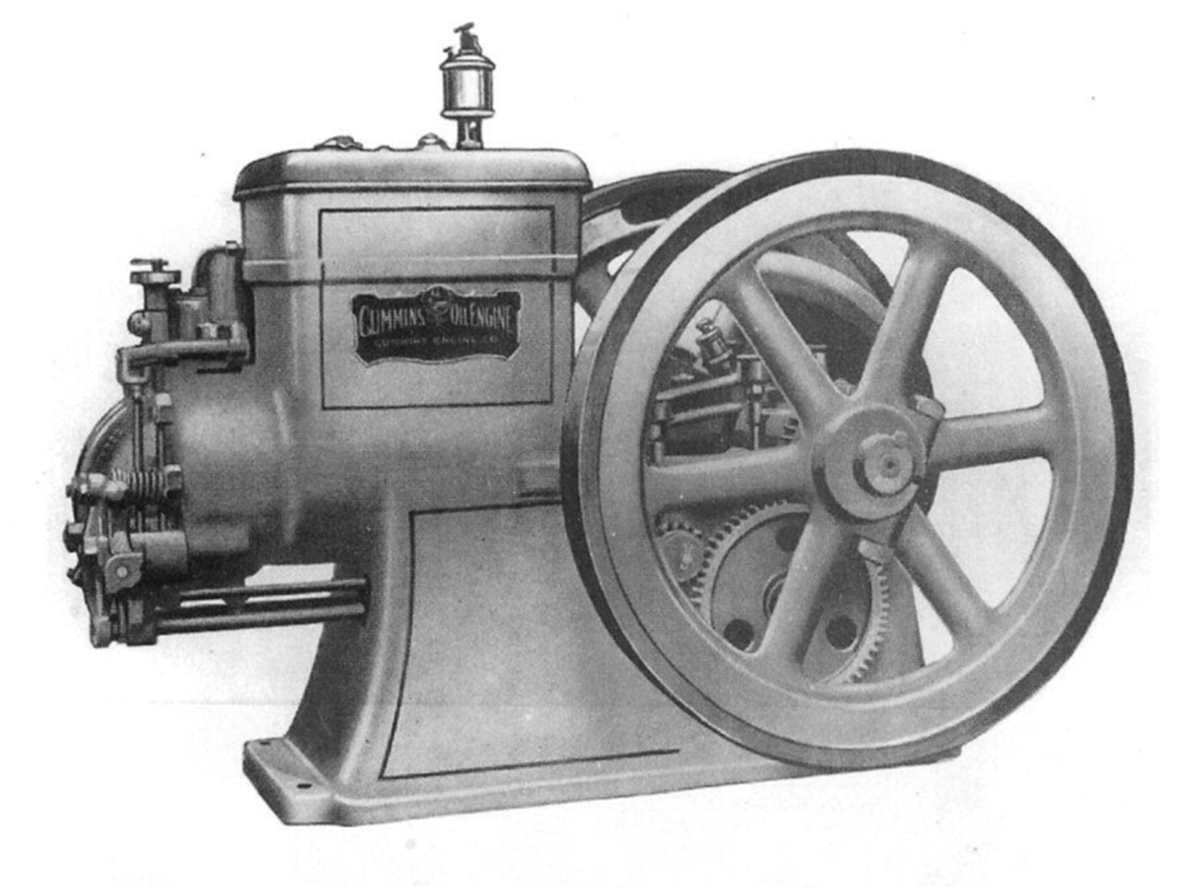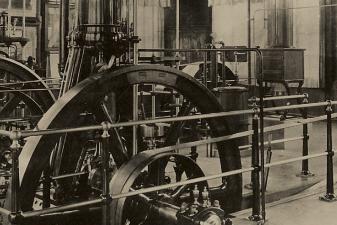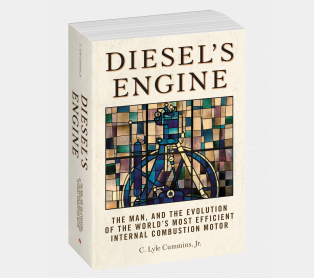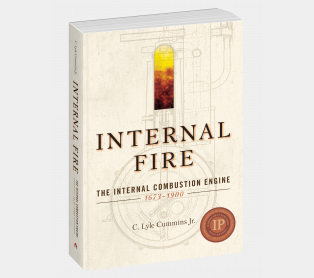Clessie Cummins Biography: A Failed Sears Partnership

The following is an excerpt from The Diesel Odyssey of Clessie Cummins by C. Lyle Cummins, Jr: a lively historical account of an American entrepreneur and inventor best-known as the father of the American diesel truck. This Clessie Cummins biography ranges from his early exploits as a boy genius through the founding and success of his global brand and company. In this excerpt, read about how diesel inventor Clessie Cummins's inventiveness went beyond machinery and into the world of business deals.
Beginning in 1920, Cummins Engine Co. had a partnership with Sears to produce a new engine line for their catalog. Clessie’s long-term concern was what Sears might do should the contract be terminated while he had on hand a large parts inventory. For clarification, he wrote W. M. Tippett (the general manager of Sears's farm equipment sales) in the spring of 1920. Tippett replied that while this was highly unlikely to happen, Sears certainly would relieve the company of such an imposed burden. Tippett’s letter, which made Clessie feel better, was “carefully filed away in the company safe.”
By 1922, both Sears and Cummins Engine Co. knew their joint venture was a mistake and began contract cancellation proceedings. Even a large price reduction had failed to do more than decrease income. At the end, Cummins had delivered 3,000 of the 4,500 engines originally ordered. (Hercules ended their 3 bhp shipments to Sears in 1923, never having made the 1 1/2 bhp size.) The Irwin estate had sunk several hundred thousand dollars into Clessie’s Hvid engine venture. Sales to Sears totaled almost $149,000, but returns and allowances offset that by about $40,000. Not included was the $14,100 worth of injectors sold to Hercules during 1919 and 1920, which performed well.
One sticky point still to be settled with Sears involved a leftover parts’ inventory, the possibility of which had earlier worried Clessie. He went to the Sears’ lawyer seeking relief but was told that under the contract the vendor bore this loss. After returning home in low spirits, he remembered the filed letter on this subject from Tippett. When W. G. [Clessie's mentor and the man who funded his business venture] reviewed the letter, he, too, thought it offered a ray of hope and suggested Clessie revisit the Chicago lawyer. He took John R. Niven, W. G.’s young business associate.
The son of a Thorntown, Indiana, banker, John was ten years old when he first met W. G. during a visit in the Niven home. His early career began with the Van Camp Company, a large Indiana food packing firm in which the Irwin family was a majority stockholder. After a summer job at age fifteen, John moved up the ladder at Van Camp’s condensed milk plant in Ohio until transferring to the general offices in Indianapolis. When W. G. found it necessary to step in as interim president, John was promoted to vice president and general manager of all Van Camp operations. W. G. always held the highest regard for Niven’s business insight and shrewdness.

The relationship that evolved between John and Clessie was professionally beneficial for the latter. For a long time, W. G. could not accept that his seemingly youthful, one-time chauffeur had matured beyond a world defined by things mechanical. He had failed to note that as Clessie’s business mentor he had molded his protégé into an astute student. Therefore, W. G. would frequently ask John for advice on whether he should support Clessie’s new proposals. John was soon captured by Clessie’s dreams, and also came to know his strengths and weaknesses. This understanding often eased Clessie’s burden in ensuing years when progress was painful. The two became close, lifelong friends.
Clessie’s account of the visit he and John made to the Sears’ lawyer’s office reads like an old-time vaudeville routine:
The young lawyer assigned to the case was visibly surprised when his secretary ushered us into his office. “This is an unexpected visit,” he said. “I thought the settlement was complete. What can I do for you now?”
I then explained we were there to get our money.
“What money? You have no money coming,” He pulled the contract out of a desk drawer and shook the document in our faces. “The answer’s all right here. There’s no point in chewing it over any more.”
“I don’t believe you’ve seen everything,” I said calmly.
“Do you by any chance have a copy of a letter written by W.M. Tippett to me concerning the responsibility of the big parts inventory?” He shook his head. “Then read this copy,” I continued, handing the paper to him. “The original is in the safe at our factory.”
The young lawyer read slowly while the color drained from his face. He reached for the phone and placed a call to Tippett’s office. I could see that he wasn’t pleased by the response to his question.
Hanging up the phone, he turned to John and me. “Tippett has a copy of the same letter in his files. So it looks like we owe you a little money after all. Will forty thousand dollars be a satisfactory settlement?”

John assured him this amount was nowhere near enough. He raised the offer to $60,000. John then told him we’d have to call Mr. Irwin. I placed it immediately and got through to him in a few minutes.
“Take it quick, before they change their minds,” W.G. squealed delightedly after I outlined the proposal.
“Of course, that’s what I told him,” I replied into the telephone. “I knew you wouldn’t accept such a ridiculous offer.”
“What’s the matter, are you crazy?” W.G. yelled back at me. “Take it! Take it!”
“Yes. All right. I’ll tell him you said ‘no,’’’ I said, hanging up the phone.
Now the lawyer began sweating blood. “How much in the world does he want?” he asked, hesitatingly.
“I’d guess maybe around seventy-five thousand,” I said. “But we’ll have to call him back and check.”
“All right, go ahead,” the lawyer insisted.
This time John placed the call and spoke to W.G., again using the same method. W.G. later told us he was getting ready to report us as escapees from a mental institution. After hanging up the phone, John whispered to me that he thought we could still obtain a higher figure. And we did succeed in getting the attorney to raise the ante to $85,000.
So I called W.G. for the third time, and inquired whether he would go for that amount. Now he’s screaming into the phone at his end. I turned around to the lawyer. “He says all right, but that we really should be reimbursed also for the taxes we’ve paid on the inventory, plus the interest on the money we had to borrow to finance the purchase.”
Our defeated adversary sighed with relief as we marched triumphantly out of the office. . . . A few days later the check arrived at the engine company.

For more stories like this one check out the related books linked below! For more excerpts of The Diesel Odyssey of Clessie Cummins—the most authoritative Clessie Cummins biography in print and the greatest insight into the life of the diesel inventor—check out the related content linked below.





